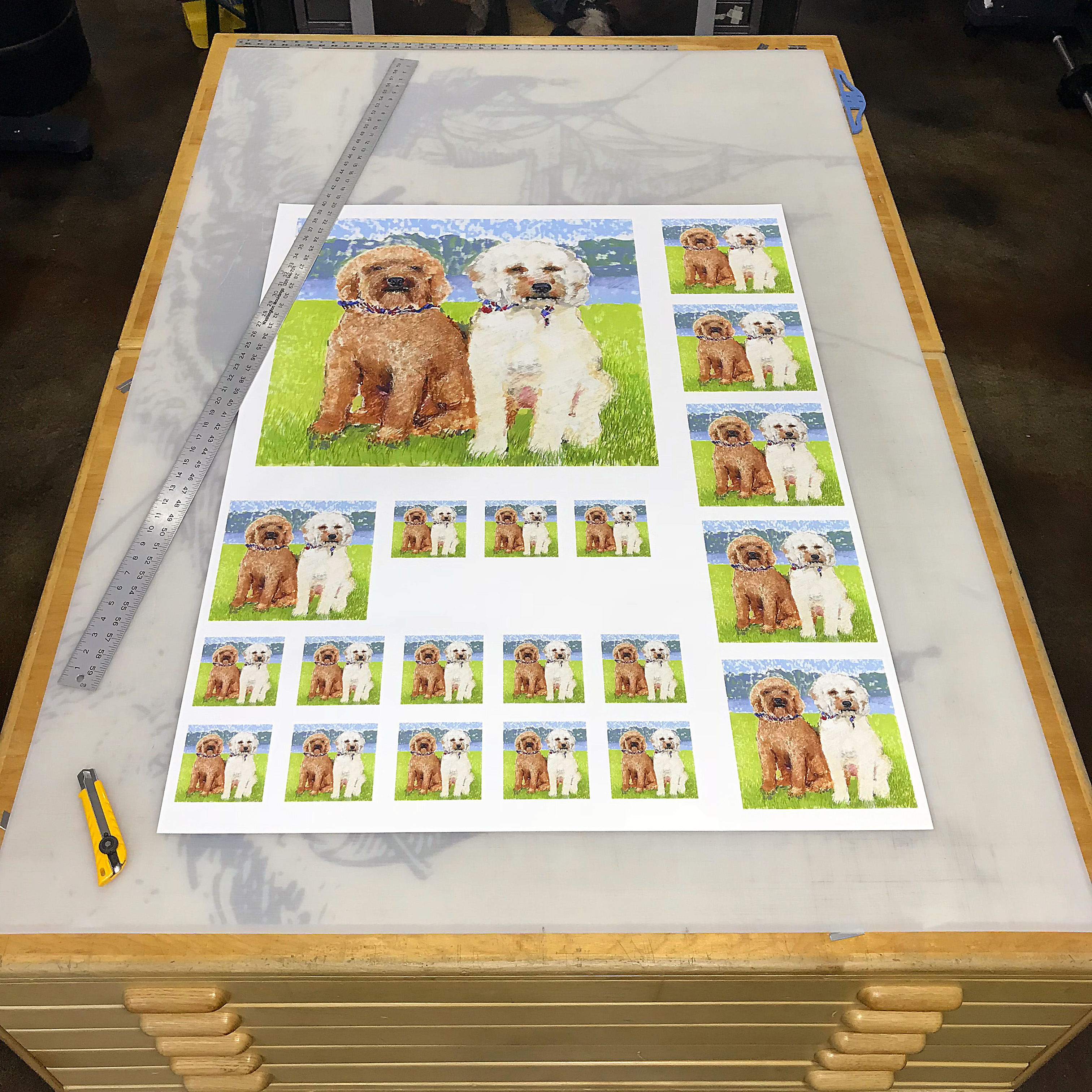Articles
Sheet vs. Roll Printed for Digital Fine Art Prints
Here at Old Town Editions we have strong views about whether we print our paper digital fine art prints off of a roll vs. a sheet. Most of the papers we carry are available in both forms. Many print shops prefer to use the roll paper because it requires less effort to use and less space to store. We feel that the benefits of printing on the sheet paper outweigh the convenience of the roll paper. We use sheets for all prints 30″x40″ and smaller.
The curl, texture, and quality of the roll paper is very different than that of the sheets. Once a paper is trained to be curly it will always remember the curl. It almost always slowly goes back to the original curl. This curl is hard to get rid of and can be distracting and even problematic for average size prints. For example, if you are trying to show your prospective client an unframed 16×20 inch print that was printed off of a roll, you will not be able to view the print without it trying to curl up and roll off of the table. You do not have this problem with sheet printing. Roll paper and sheet paper are very obviously different in feel and appearance even being the same exact paper. Sheets have a lush, very art paper like quality, and that same paper off of a roll has a harder, compressed surface texture. The roll paper can have a slightly milkier, even scuffed look because of rubbing when it is rolled at the mill. Paper has a grain that is stretched/broken when rolled tightly around a roll.
There are ways that one can combat the curling issue caused by rolls, none of which are good for the print. Most of these ways stress the paper out even more than just being on a roll and are not recommended. One method is called decurling. In this process you take your print and curl it in the reverse direction around the roll. This does two undesirable things to your print. It stresses out the paper even more, changing its appearance and putting pressure on the print surface, and more than likely scuffing it ever so slightly. The proper handling for a print is to have nothing touch the surface of the paper once it has an image printed. This solution for the reversing the curl is flawed and causes you to slightly damage your prints. These roll prints are difficult to frame and often require drymounting or other extreme measures to lay flat. These framing methods to combat the roll issue are not considered archival and are not recommended.
By printing on a sheet you can enjoy the print for what it is without having to fight the curl to view it properly or deal with difficulties in framing. You also get to utilize the paper in its natural flat state, preserving the grain and texture. Framing these flat sheets is a breeze; all you need to do is hinge the sheet at the top to prevent it from falling in the frame and place a cut mat over the face of the print to hold it down. It will not try to curl or get wavy over time like a print off of a roll. The sheets provide a more elegant presentation for your print over time whether it be framed or un-framed.
An example of a full sheet of prints. Flat sheets allow you to create very small prints that still lay perfectly flat.
Obviously one can only get sheets up to a certain size. Only the high quality paper manufacturers like Hahnemuhle understand the demand for oversized flat sheets and offer them. The largest sheet on the market is 35″x47″. This sheet size was originally created for digital printmakers to use on their IRIS printers, which are the printers that started this industry. These printers are now obsolete, but we still insist upon using the sheets for any prints 30″x40″ and smaller. We attempted a transition to roll paper because it’s less expensive and easier to store unused, but we were not satisfied at all upon comparison to sheets. Prints over 30″x40″ inches printed off of a roll are a little less problematic. The weight of the large print flattens out pretty well on its own. We do print off of a roll for anything over 30″x40″.

